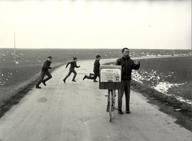





















Mario DonderoPalazzo Casotti
6th May - 12th June 2011 curated by Elio Grazioli |
 Campagne di Reggio Emilia, 1967© Mario Dondero
|






















Mario DonderoPalazzo Casotti
6th May - 12th June 2011 curated by Elio Grazioli |
 Campagne di Reggio Emilia, 1967© Mario Dondero
|